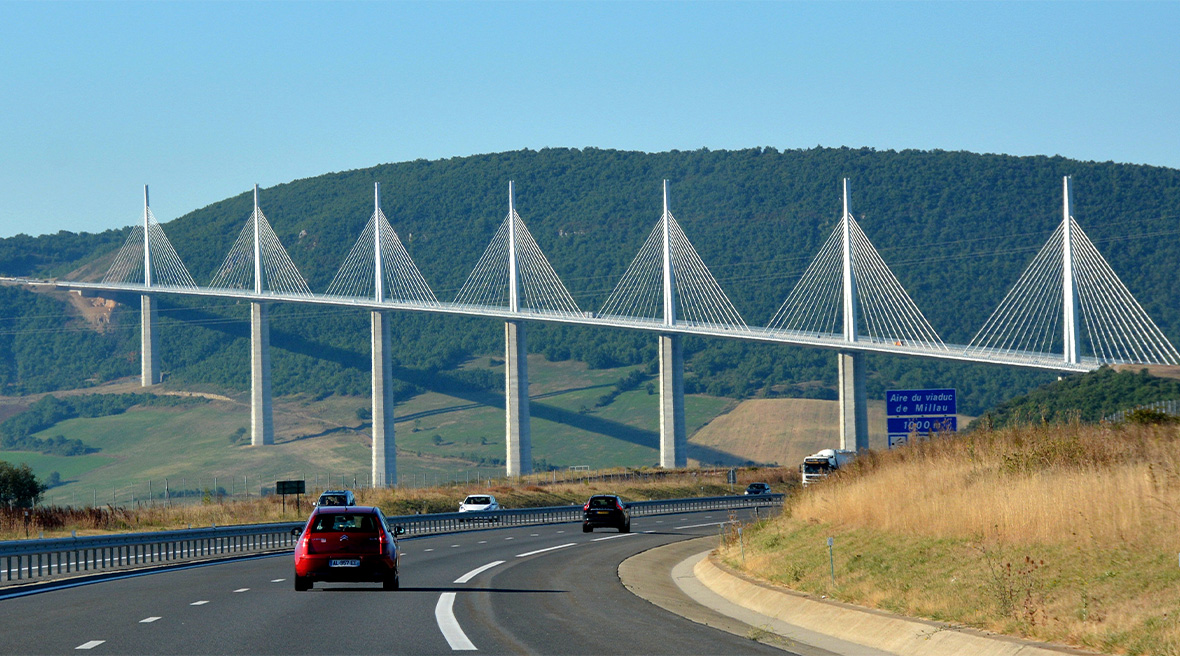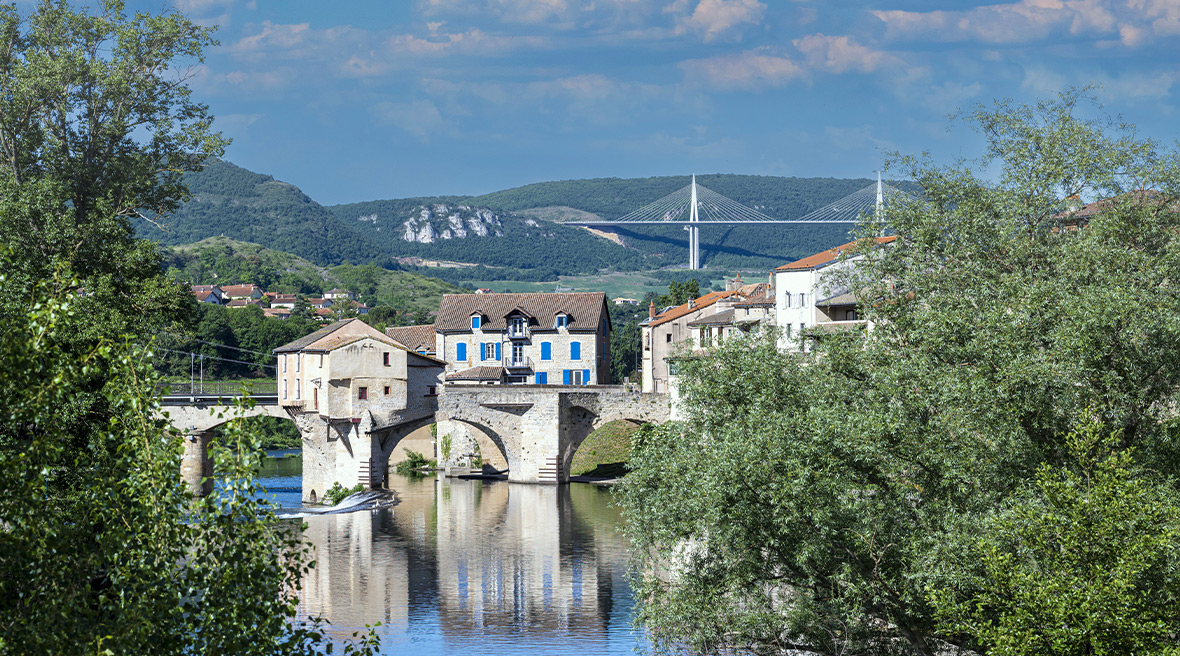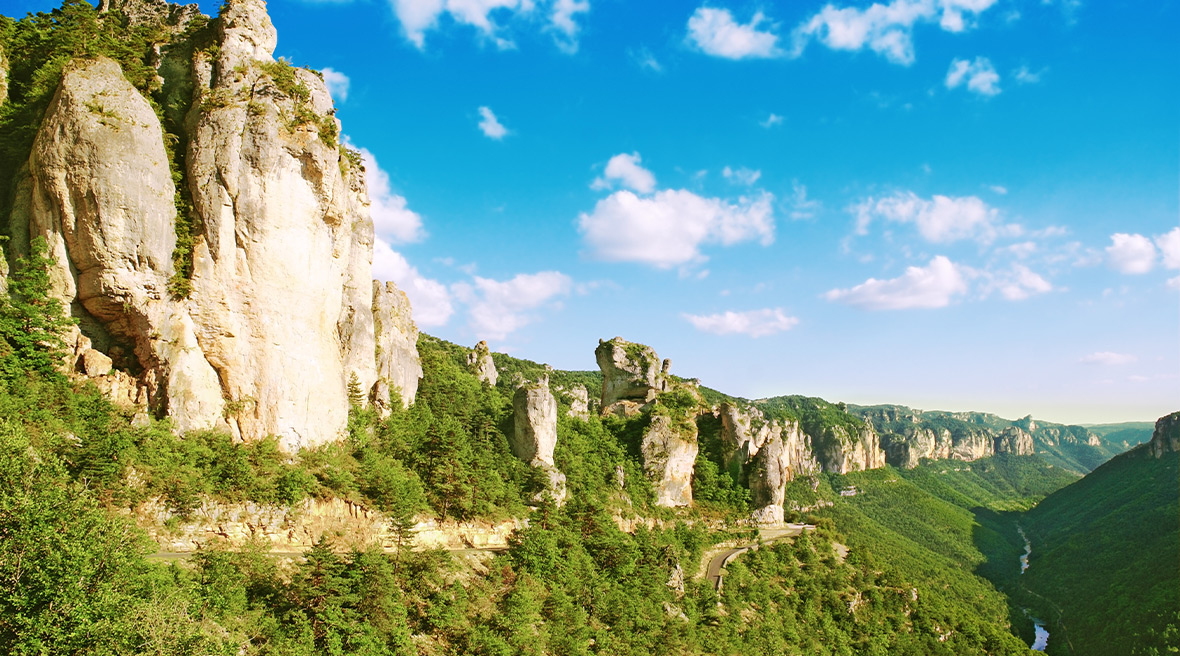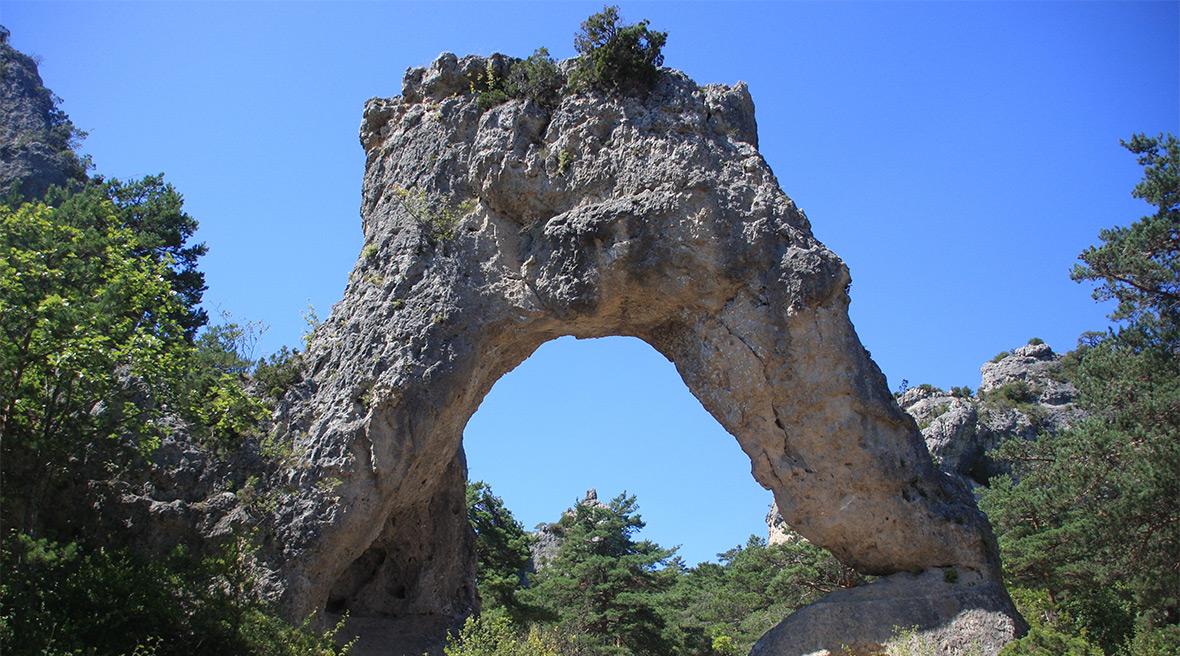One of the greatest feats of modern structural engineering, the Millau Viaduct is a road bridge across the Tarn valley in southern France. It can be seen from many miles around, and appears in most panoramic views of the beautiful Aveyron area.
At 343 metres, it is the tallest cable stayed bridge in the world, and one of the highest road bridges in the world of any description. Driving over it is a highlight of any road trip in France, whether you are on your way to any one of the beautiful towns of the south, the Côte d’Azur or even into Spain.
Where is the Millau viaduct?
Millau is a town in the mountainous Occitanie region of southern France. The closest major city is Montpellier. The viaduct runs to the west of the town, on the A75-A71 autoroute.
Driving to Millau from Calais

Credit: Millau Viaduct, Mike McBey CC BY 2.0, via Wikimedia Commons
The Millau viaduct can be seen by drivers from miles around
If you are driving to Montpellier from our terminal in Calais your route would take you right across the viaduct. It takes around 9 and a half hours via the A16 and A71 roads.
Visiting the Millau Viaduct
The history of the viaduct
Plans for a road crossing to alleviate the traffic through the town of Millau date from the 1980s. British architect Sir Norman Foster was among the team that designed the viaduct, which was considered the most viable solution to cross the valley and river, with the least ecological impact on the area. Construction of the viaduct began in 2001.
When was it opened?
The viaduct was officially opened in December 2004, and won the 2006 Outstanding Structure Award from the International Association for Bridge and Structural Engineering.

The viaduct from a bridge over the river Tarn
Can you walk across Millau Viaduct?
There is no pedestrian access to Millau viaduct. It is a high speed motorway bridge, but there are guided informational tours. These can be booked in advance and take visitors on a designated nature path to restricted areas, to a viewing platform below the bridge and even inside one of the tallest pylons.
There is a marathon every year that is run over the viaduct, and the Tour de France has passed under the viaduct a number of times since it was opened.
Why is Millau Viaduct curved?
The viaduct was built with a slight curve, extending up to 20km on the road either side. This is to help drivers, who on a long straight bridge that is so high often describe a feeling of ‘floating’ while driving.
Situated in the breathtaking Grands Causses national park, the Millau viaduct has become one of the major sights of the area, but there are plenty of other reasons to visit Millau and the wider Aveyron region.
Things to see and do in and around Millau

The spectacular Grands Causses stretches for over 300,000 square hectares
La Graufesenque
The archaeological site of Graufesenque, just outside the town of Millau, is small but had a vital importance in the ancient Roman world. It was the site of a pottery factory which produced items that have been found as far afield as Scotland and north Africa. There are some well preserved remains of the factory, and a small museum displaying pieces made at Graufesenque.
Grands Causses Regional Nature Park
The Grands Causses Regional Nature Park is a wild landscape of rocky plateaus, limestone gorges, mountains and forests in the south of the Massif Central. It is one of the reasons for the viaduct’s existence! It is a fantastic area to explore on foot, by bike or boat, and offers great opportunities for climbers, runners and hikers. There are numerous signposted paths to follow, leading to hilltop villages, incredible rock formations and panoramic views (with the viaduct usually still to be seen).
La Cité de Pierres - Montpellier-le-Vieux

The Gate of Mycenae, one of the ‘City of Stones’
One of the signature features of the Grands Causses are the ‘City of Stones’ in Montpellier-le-Vieux – the stunning limestone rock formations formed by the unique geology and nature of the region. There are six trails to explore on foot, each taking no longer than an hour, but for those who want to give their feet a rest, there is a train that winds its way to the major formations, such as the Gate of Mycenae and the Devil’s Chair.
Musée de Millau
The museum of Millau is more than worth a visit if you are interested in the archaeology and history of the area. Housed in a former hotel in the centre of the town, the museum has 30 exhibition rooms with displays of palaeontology and prehistoric remains discovered in the area. There are vases and other pottery from Graufesenque and evidence of the traditional local crafts of leather and glove-making.
Beffroi de Millau
The belfry of Millau is the tallest structure in the old part of the town. There are 220 narrow steps up a spiral staircase to the top, and you are rewarded with spectacular views of the surrounding area, dominated by the viaduct.
Marvel at the Millau Viaduct with Eurotunnel Le Shuttle
Whether you are on your way to Montpellier or visiting the Grands Causses, the Millau viaduct will be one of the unforgettable sights of your south of France road trip. Let your journey start with Eurotunnel Le Shuttle and a crossing from Folkestone to Calais in only 35 minutes.